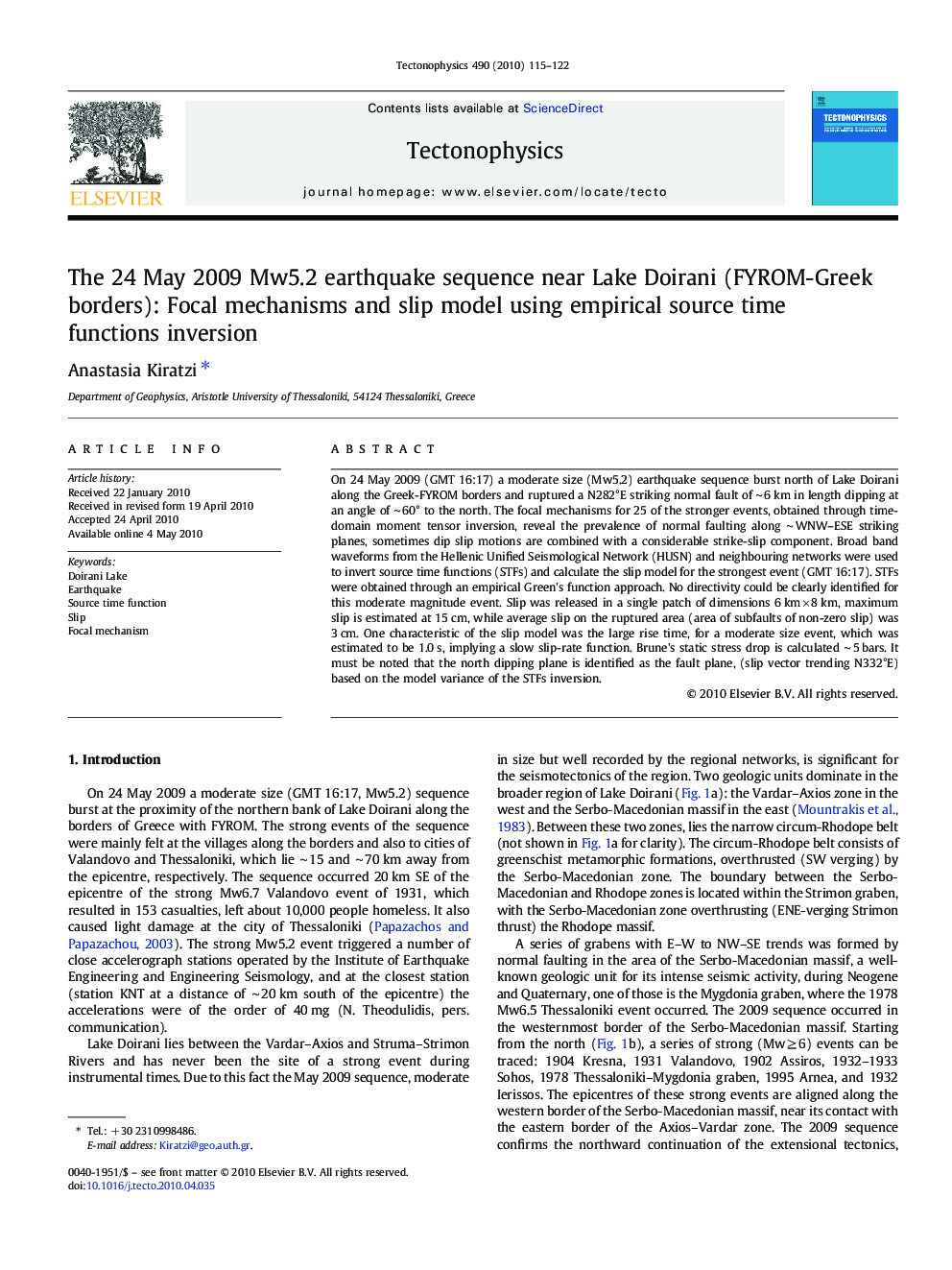| Article ID | Journal | Published Year | Pages | File Type |
|---|---|---|---|---|
| 4693475 | Tectonophysics | 2010 | 8 Pages |
Abstract
On 24 May 2009 (GMT 16:17) a moderate size (Mw5.2) earthquake sequence burst north of Lake Doirani along the Greek-FYROM borders and ruptured a N282°E striking normal fault of â¼Â 6 km in length dipping at an angle of â¼Â 60° to the north. The focal mechanisms for 25 of the stronger events, obtained through time-domain moment tensor inversion, reveal the prevalence of normal faulting along â¼Â WNW-ESE striking planes, sometimes dip slip motions are combined with a considerable strike-slip component. Broad band waveforms from the Hellenic Unified Seismological Network (HUSN) and neighbouring networks were used to invert source time functions (STFs) and calculate the slip model for the strongest event (GMT 16:17). STFs were obtained through an empirical Green's function approach. No directivity could be clearly identified for this moderate magnitude event. Slip was released in a single patch of dimensions 6 km Ã 8 km, maximum slip is estimated at 15 cm, while average slip on the ruptured area (area of subfaults of non-zero slip) was 3 cm. One characteristic of the slip model was the large rise time, for a moderate size event, which was estimated to be 1.0 s, implying a slow slip-rate function. Brune's static stress drop is calculated â¼Â 5 bars. It must be noted that the north dipping plane is identified as the fault plane, (slip vector trending N332°E) based on the model variance of the STFs inversion.
Related Topics
Physical Sciences and Engineering
Earth and Planetary Sciences
Earth-Surface Processes
Authors
Anastasia Kiratzi,
